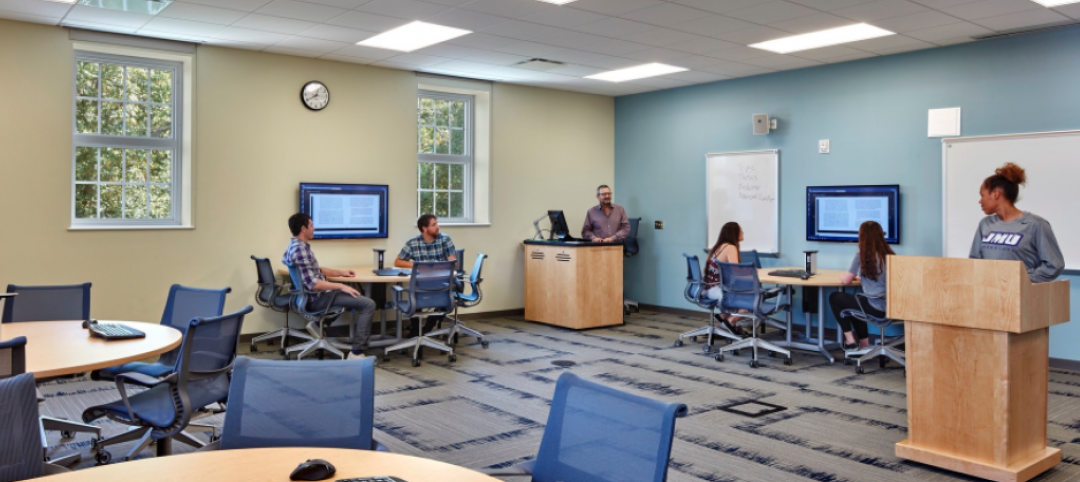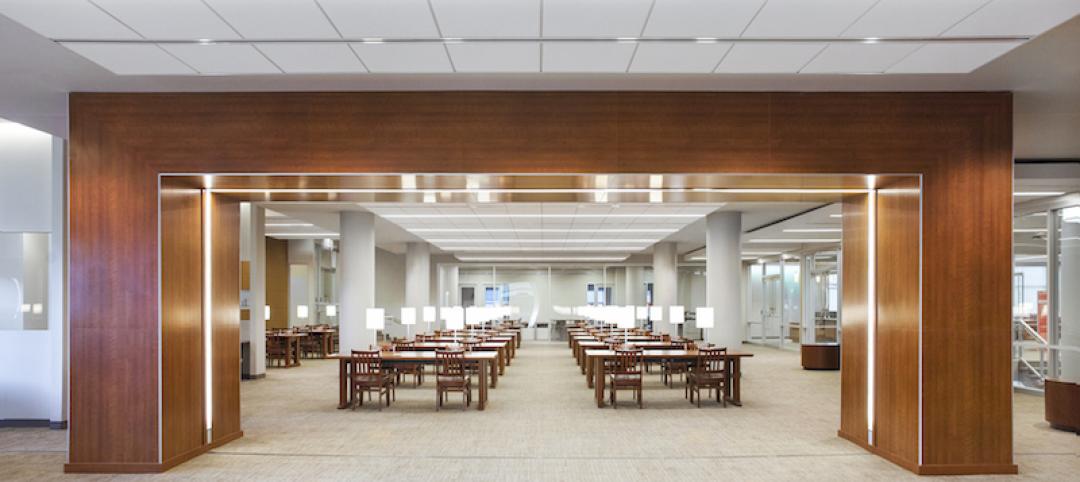The hope was that a complete restoration and modernization would bring life back to three neoclassic beauties that formerly served as Phoenix Union High School—but time had not treated them kindly. Built in 1911, one year before Arizona became the country's 48th state, the historic high school buildings endured nearly a century of wear and tear and suffered major water damage and years of termite infestation that severely compromised their wood-frame interior structures. There was considerable hand-wringing over how much of the three-story buildings could be salvaged.
After extensive review, the Building Team devised a $19.6 million program where all three buildings would be saved and reborn as the 84,435-sf University of Arizona College of Medicine. It was precisely that concern for rescuing the trio of buildings that caught our judges' attention. “Reusing three buildings is quite significant. It just isn't something you think to do too often,” says Walker C. Johnson, FAIA, principal at Johnson Lasky Architects in Chicago.
Only one of the three buildings was discovered to be structurally unsound. Its entire wood-frame interior was dismantled and replaced with a steel-frame system. To protect its historic masonry shell, all the work had to be performed through the building's existing window openings. The other two buildings were shored up as necessary, and all three were fitted with new operable, insulated, and historically sensitive windows.
Another concern focused on how best to fit the necessary classroom space and technology required of a 21st-century medical college into turn-of-the-20th-century buildings. When it was discovered that up to 40% of the buildings' available space would be sacrificed to staircases, elevators, and bathrooms (each floor plate is approximately 7,000 sf), the decision was made to locate those elements in newly constructed space—two modern glass “outhouses” (translucent glass wrapped about masonry cubes) connected by glass bridges to two of the buildings. “The additions are unique architectural solutions that don't draw the focus away from the original buildings,” says Jeff Pratt, principal at KJWW Engineering Consultants, Naperville, Ill., and one of BD+C's Reconstruction Award judges.
Additional interior reconfiguration focused on the building's auditorium. While the state's Historic Preservation Office (which had to approve all work) would have liked the auditorium completely restored, the university needed to borrow some of the space for much needed classrooms.
A compromise was reached and a building within a building was erected: one half the space is still used as the auditorium while the other half is classroom space for the state-of-the-art T-Health (telehealth and telemedicine) program. The walls can easily be removed, the space dismantled, and the auditorium returned to its original size. This design feature was lauded by juror K. Nam Shiu, VP at Walker Restoration Consultants, Elgin, Ill., who said, “The work done on the interior is very forward-thinking.”
Related Stories
Higher Education | Jun 7, 2017
Building for the future: Five trends in higher education projects
Preparing students for life after graduation has become the primary motivator behind construction initiatives at U.S. colleges and universities.
Higher Education | Jun 6, 2017
Funding remains a concern, but not always an impediment
Colleges and universities are adept at tapping a variety of sources—taxpayers, investors, donors, and, yes, students—to fund their growth ambitions.
Higher Education | May 31, 2017
Space utilization in higher education: more than sf per student
There’s more to space utilization than how often a room is occupied. What happens inside an occupied room is just as important.
Reconstruction & Renovation | May 30, 2017
Achieving deep energy retrofits in historic and modern-era buildings [AIA course]
Success in retrofit projects requires an entirely different mindset than in new construction, writes Randolph Croxton, FAIA, LEED AP, President of Croxton Collaborative Architects.
Libraries | May 16, 2017
A New York-area community college adds new zest to its library
Wired seating and group work areas abound.
Healthcare Facilities | May 16, 2017
University of Pennsylvania’s new $1.5 billion hospital is being built with the future in mind
The Pavilion broke ground on May 3.
University Buildings | Apr 28, 2017
Suburban Chicago college breaks ground on aviation-themed student center
The design of the center is meant to pay tribute to the university’s heritage in aviation and aeronautics.
University Buildings | Apr 26, 2017
UMass Amherst is home to America’s first CLT academic building
The building brings the architecture, landscape architecture, and building technology departments under one roof.
Higher Education | Apr 24, 2017
Small colleges face challenges — and opportunities
Moody’s Investor Service forecasts that closure rates for small institutions will triple in the coming years, and mergers will double.
University Buildings | Mar 8, 2017
Massive mixed-use residential village on USC’s Los Angeles campus on schedule to open this fall
Prefabrication of the six buildings’ walls reduced construction time by a year.
















